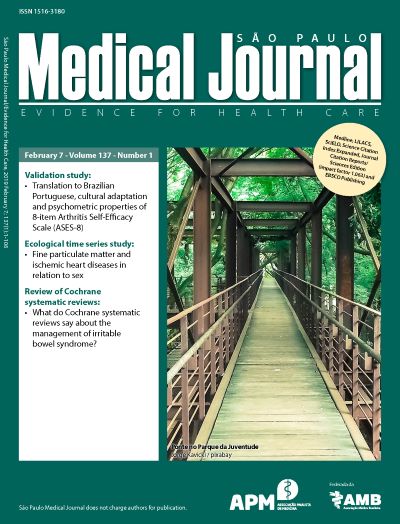Coexistence of morphea and granuloma annulare
a rare case report
Keywords:
Granuloma annulare, Collagen diseases, Scleroderma, localizedAbstract
CONTEXT: Localized scleroderma (morphea) is characterized by fibrosis of skin and subcutaneous tissue. Granuloma annulare is a relatively common disease that is characterized by dermal papules and arciform plaques. CASE REPORT: Here, we present the case of a 42-year-old woman who developed granuloma annulare on the dorsum of her feet and abdominal region, and morphea on the anterior side of her lower limbs. We also discuss the etiological and pathogenetic processes that may cause the rare coexistence of these two diseases. CONCLUSION: Only a few cases in the literature have described coexistence of morphea and granuloma annulare.
Downloads
References
Fett N, Werth VP. Update on morphea: part I. Epidemiology, clinical presentation, and pathogenesis. J Am Acad Dermatol. 2011;64(2):217-28; quiz 229-30.
Dabski K, Winkelmann RK. Generalized granuloma annulare: clinical and laboratory findings in 100 patients. J Am Acad Dermatol. 1989;20(1):39-47.
Zollinger T, Mertz KD, Schmid M, et al. Borrelia in granuloma annulare, morphea and lichen sclerosus: a PCR-based study and review of the literature. J Cutan Pathol. 2010;37(5):571-7.
Ben-Amitai D, Hodak E, Lapidoth M, David M. Coexisting morphoea and granuloma annulare-are the conditions related? Clin Exp Dermatol. 1999;24(2):86-9.
Holmes RC, Meara RH. Morphoea, sclerotic panatrophy and disseminated granuloma annulare. Clin Exp Dermatol. 1983;8(2):201-3.
Lo Schiavo A, Ruocco E, Gambardella A, O’Leary RE, Gee S. Granulomatous dysimmune reactions (sarcoidosis, granuloma annulare, and others) on differently injured skin areas. Clin Dermatol. 2014;32(5):646-53.
Tajima S, Suzuki Y, Inazumi T, Mori N. Systemic scleroderma and perforating granuloma annulare: differential diagnosis from calcinosis. Dermatology. 1996;192(3):271-3.






